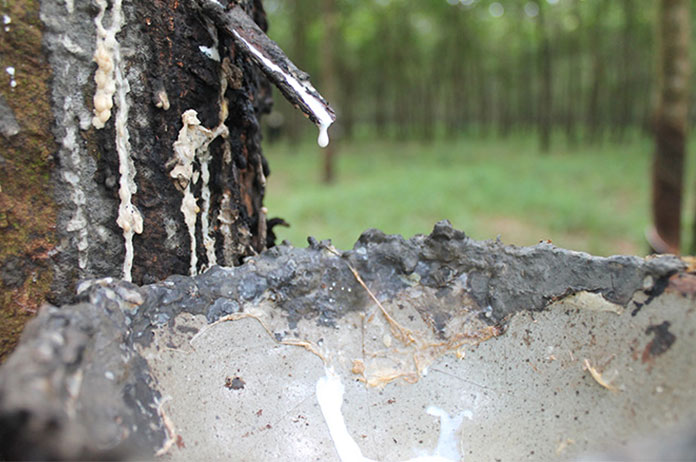Rubber Prices In Decline

The price that Cambodian rubber latex fetches overseas dropped by 10 percent since the beginning of the year, a fall that officials attribute to an oversupply of the commodity in global markets and the sluggish growth of the international economy.
In January, the price of Cambodian rubber overseas declined by 10 percent, going from $1,600 per ton in December to $1,444 by the end of the month. Compared to January last year, when a ton of the commodity sold for $1,908, prices have dropped by as much as 25 percent, according to data released yesterday by the General Directorate of Rubber.
“We have noticed that the supply of rubber is still exceeding market demand. Meanwhile, the global economy, especially the United States and China, the two main markets for rubber, has not performed well economically. This has affected the price of rubber,” said Pol Sopha, director-general of the directorate. “The price of our rubber is closely tied to the global economy too.”
In November last year, Malaysia, Thailand, and Indonesia decided to jointly restrict the amount of rubber they supply to the international market. Mr. Sopha believes the move will help the price of Cambodian rubber recover. “With these three countries committing to reduce the supply and with the World Bank forecasting that global economic growth will increase, the price of rubber will be picking up at some point in the upcoming months,” said Mr. Sopha.
In 2017, Cambodia exported more than 190,000 tonnes of rubber latex, an increase of 30 percent year-on-year, according to the directorate. In January, the kingdom exported 18,783 tonnes of rubber, 32 percent more than the same month last year. Most of it was sent to Vietnam, Malaysia, Singapore, and China.
During a meeting in Beijing last month, Yim Chhayly, Cambodia’s Deputy Prime Minister and chairman of the Cambodian Agricultural and Rural Development Council, and Patrick Yu, chairman of Cofco – China’s largest food processor, manufacturer, and trader – agreed to set up a working group in the kingdom to explore the possibilities available in the local agricultural sector, including rubber.
Cambodia has 436,340 hectares of rubber plantations, of which 170,230 hectares (39 percent) are now harvestable. Cambodia is the sixteenth-largest rubber latex producer in the world, according to Mr. Sopha, who also explained that the government aims to increase production to 300,000 tonnes by 2020.